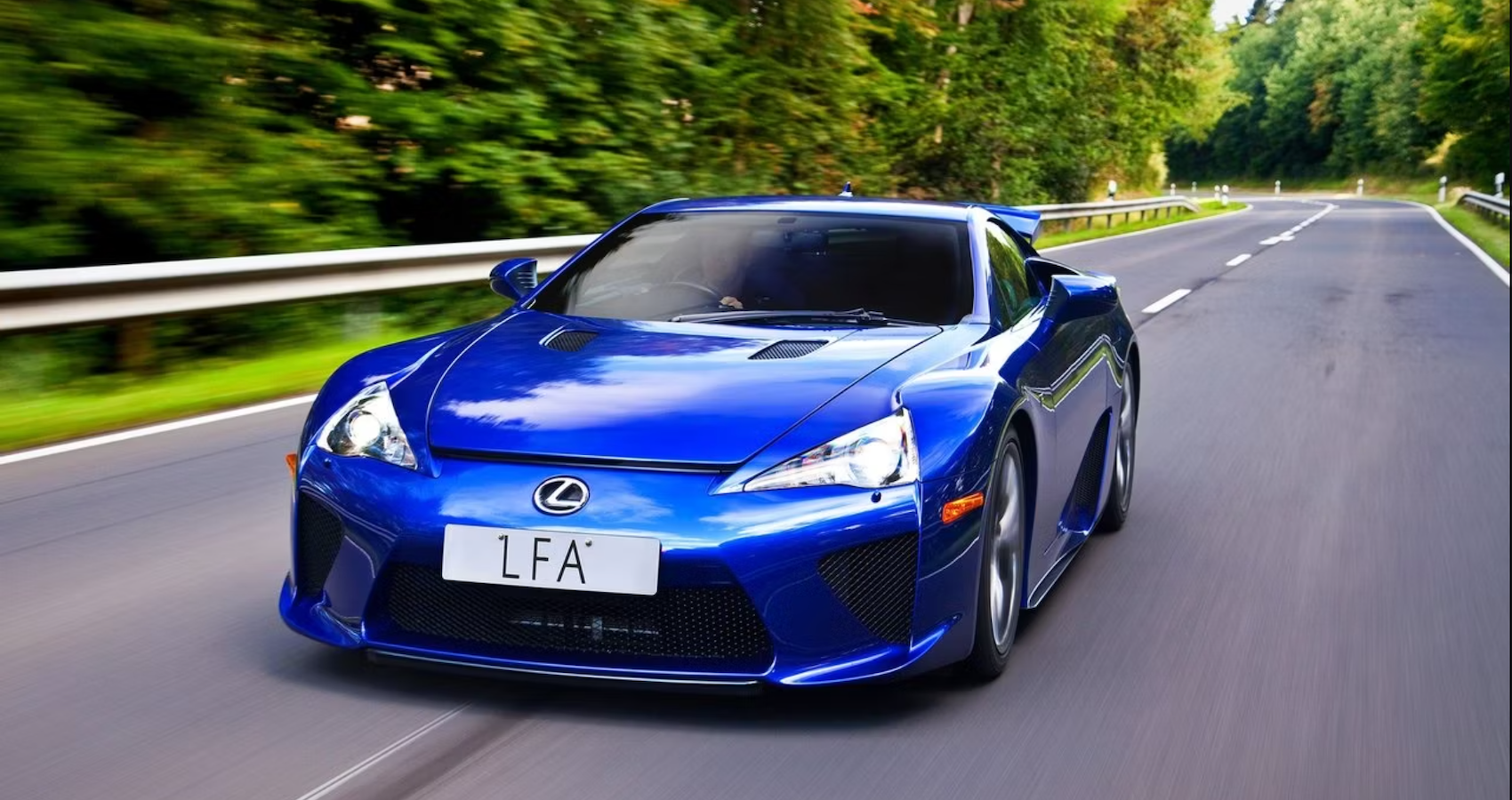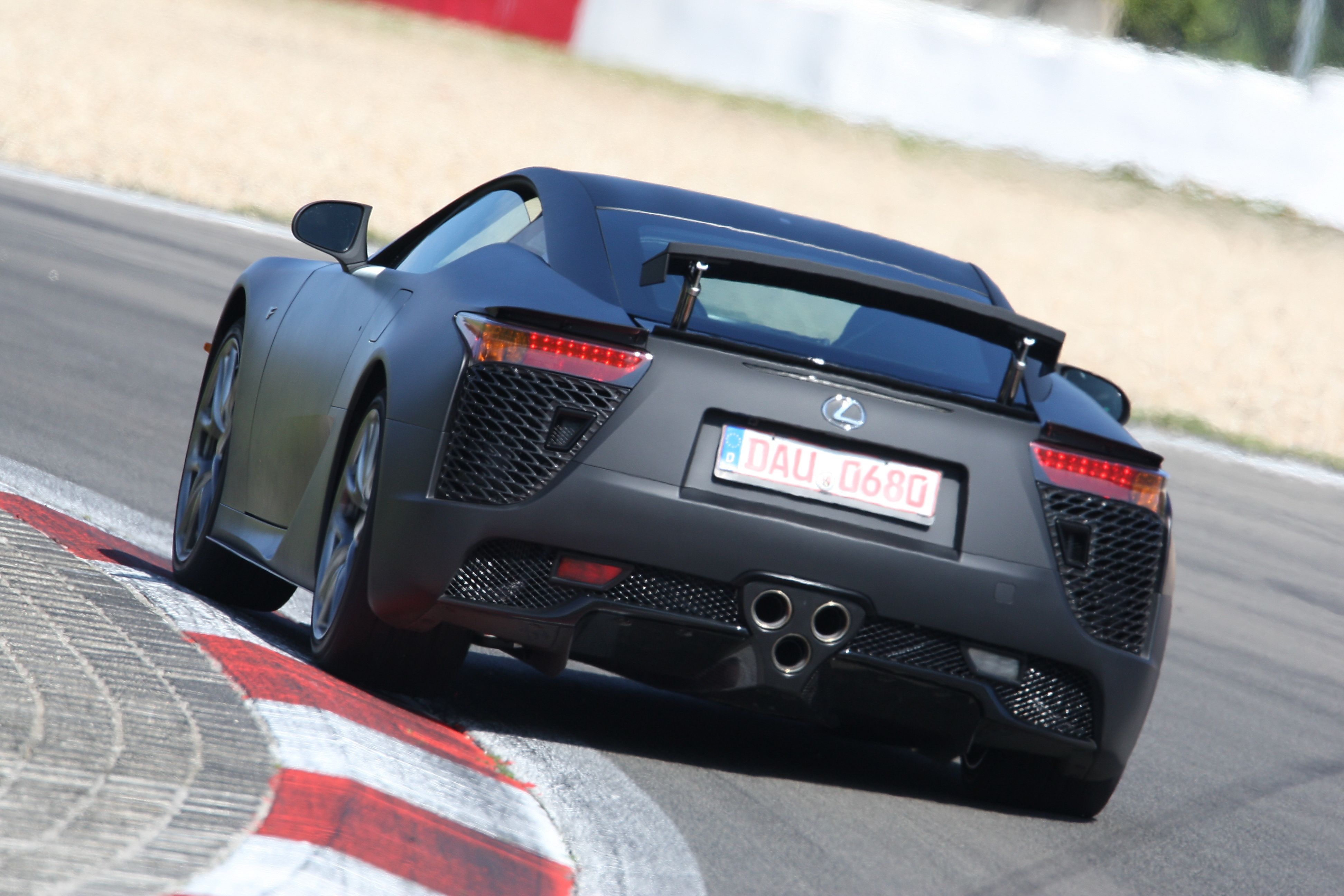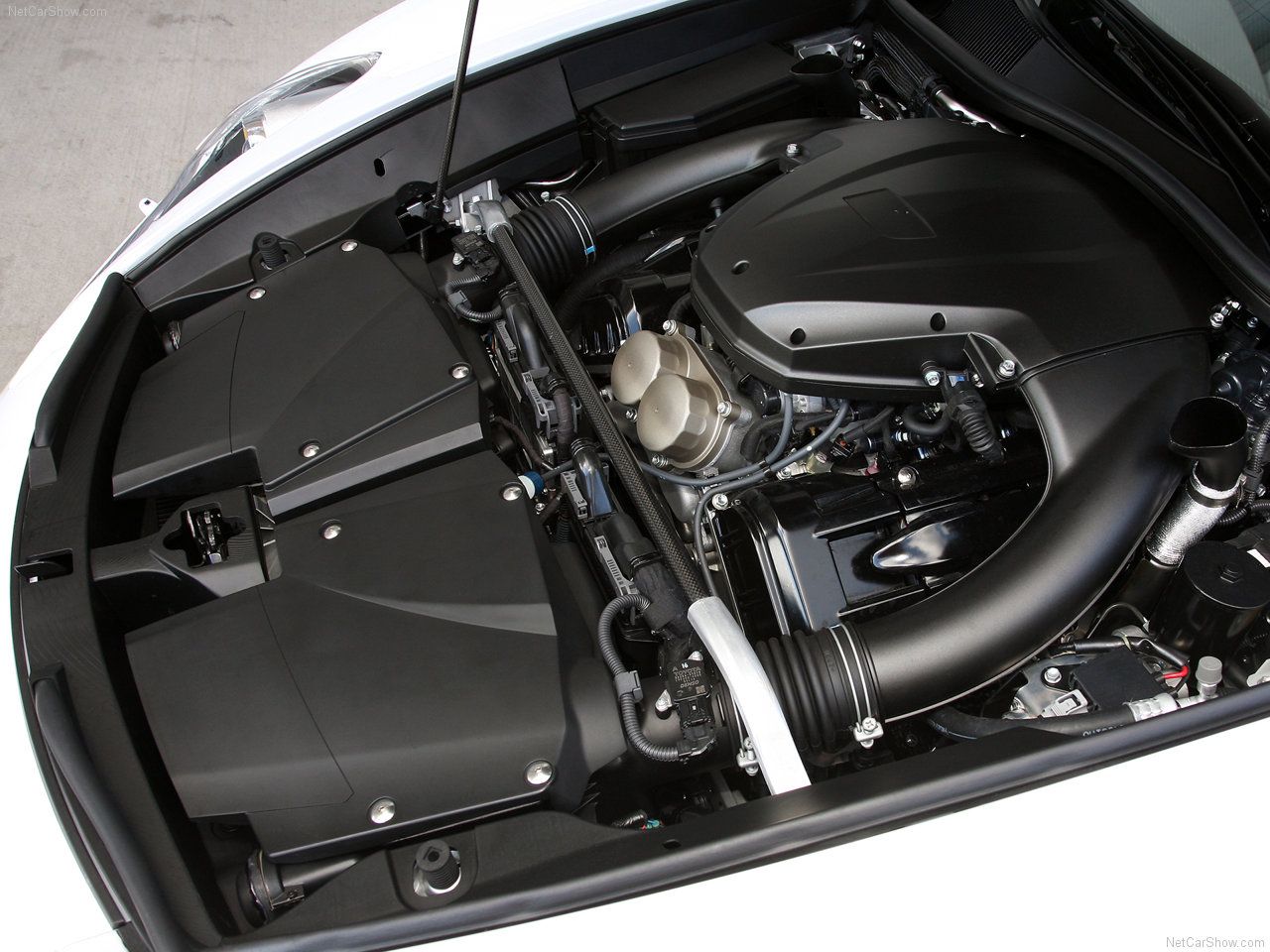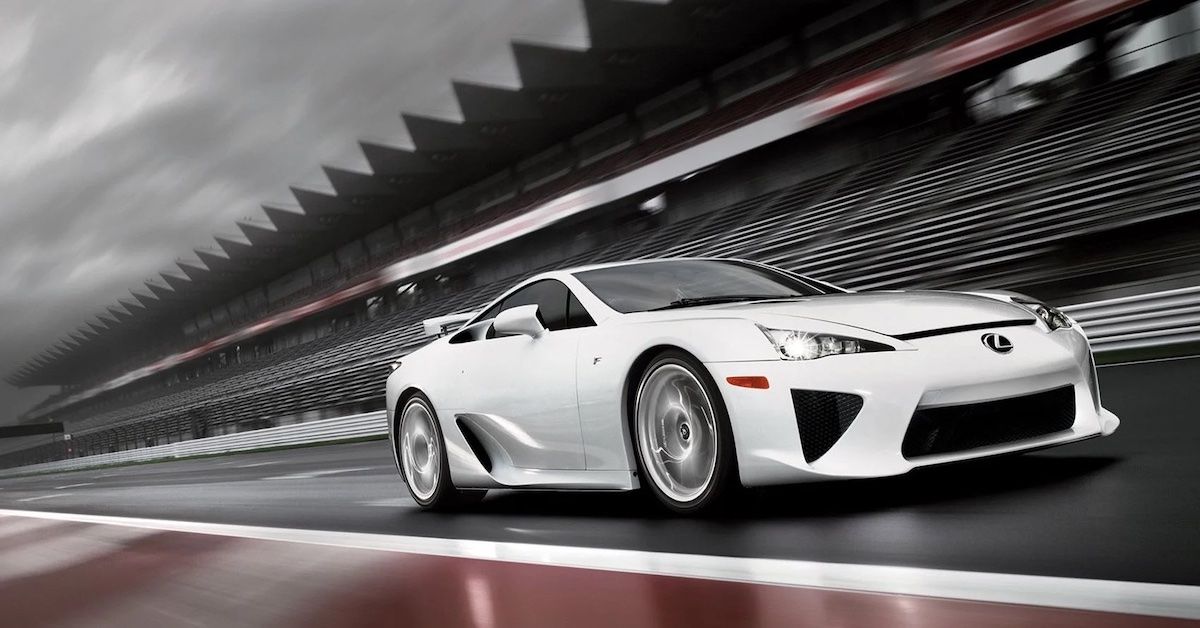Toyota and its luxury subsidiary brand, Lexus, have only ever stepped out of their comfort zone once, when it manufactured a legendary one-hit wonder: The V10-powered LFA. It was an enormous risk for a carmaker that mainly prioritized practical and utilitarian vehicles to make a supercar that was more expensive than the Ferrari 599 and Lamborghini Gallardo at the time, and even though its hefty price tag is what ultimately hindered its sales rate, the vehicle itself is still regarded as a masterpiece of machinery.
From the get-go, Toyota threw everything it could at the LFA, from its engine and performance to its mean looks and thrilling sound. Nobody would have thought such an impressive supecar could emerge from Toyota’s factories, but emerge it did, and the Lexus LFA would mark its name in history as one of the best V10s ever. Here’s what makes it so special.
The Lexus LFA Is One Of The Best-Sounding Supercars Ever
Toyota and Lexus didn’t just design the LFA to be fast and handsome, they also wanted it to sound like a true race car, which is why they partnered up with Yamaha to design an engine and exhaust system that sounded like nothing else in existence - and they hit the mark completely. Yamaha tuned every single aspect of the exhaust to make sure it sounded as eargasmic as possible, and they even went as far as to funnel part of the intake piping through the cabin to enhance the sound for the driver. Also, the V10 inside the LFA could rev up to 9000 rpm so quickly, Toyota had to install a digital gauge simply because an analog rev counter couldn’t keep up. The resulting sound of such a powerful, high-revving engine was extremely aggressive and as close to that of a race car as a road-legal supercar could get, it was described as the ‘roar of an angel’ by one of Toyota’s engineers.
The Lexus LFA Was Actually A Bargain
Despite its hefty $350,000 price tag, which we already mentioned was more than a Ferrari 599GTB, the painful truth is that the Lexus LFA actually cost more to manufacture than its actual asking price, meaning that Toyota lost money on every single unit they sold. Not to mention, the LFA underwent a 10-year design and development period during which millions upon millions of dollars were already spent before the sale-ready version was even finished.
Leaving performance specs aside - though the LFA has quite the resume in that department, its exclusivity goes far beyond that. First off, it’s Toyota’s only supercar even to this day, and only 500 units were ever made, which comfortably makes it one of the rarest supercars from the past two decades. Secondly, the asking price for an LFA these days comes in at somewhere around $800,000, though some have been known to sell for well over a million bucks. Most importantly, however, is the fact that the LFA possesses tons of tech that many other supercars from its era didn’t, and every single detail was revised and built with the highest possible standards in mind.
The Lexus LFA’s Impressive Specs
The godly 4.8-liter V10 that bellows beneath the LFA’s Japanese-style hood makes 553 horsepower at 8700 rpm and 354 pound-feet of torque at 6800 rpm, and it boosts the super Lexus from 0-60 mph in just 3.7 seconds on its way to a top speed of 202 mph. The LFA’s six-speed manual transmission is lightning fast and incredibly flexible, allowing the driver to determine how and when to shift. When it comes to handling, the LFA only continues to boost its credentials, starting with extreme levels of balance and stability even at +150 mph speeds, aided by an automatic rear wing, plenty of aero body parts to improve downforce, and a Torsen limited-slip differential. The vehicle’s electric handling is sharp and immensely precise, and carbon-ceramic brake discs along with Brembo brakes granted the LFA powerful stopping power.
Toyota Shoved Tons Of Tech Inside The LFA
Nowadays, car-related tech usually relates to in-cabin comfort features and driving assist aids, but that’s nowhere near the LFA’s case, which boasts plenty of true racing-derived mechanical features that made it one of the most advanced supercars available at the time. Its V10 had individual throttle bodies for each cylinder, along with forged titanium rods and solid titanium valves, and dry sump lubrication was the method of choice in order to achieve a lower center of gravity.
The Lexus LFA’s immaculate chassis is composed of an aeronautical-grade carbon fiber-reinforced polymer monocoque, complemented by aluminum removable subframes for decreased repair costs. Furthermore, the LFA’s stilts present themselves in the form of fixed control arms up front and multi-link suspension in the rear, and the overall ride is sporty and stiff yet not overly uncomfortable.
The LFA’s Exterior Looks Mean, But It’s Also Functional
From the outside, the Lexus LFA’s appearance may not seem as refined as some of its rivals, but the carbon-fiber body is designed in such a way for a reason. Carbon fiber allows the body panels to be molded with sharp edges for improved aerodynamics, and the entire silhouette of the vehicle is intended to guide airflow to specific areas. Even the door mirrors help funnel air into the fender-mounted air intakes, which cool off the LFA’s dual radiators in the rear.
The LFA’s roof sits low and sleek, like a small ripple in a sheet of water, and it feeds into a boxy rear that features gurney flaps and an automatic wing in between, massive radiator vents beneath each taillight, and a tritip triangular exhaust setup mounted above an aggressive diffuser.
To summarize, the Lexus LFA is Toyota’s most extreme and thorough vehicle ever developed, and they brought together their biggest minds and best tech to turn it into the beast of a car that it’s recognized as today. We might never see anything like it again.



.jpg)

